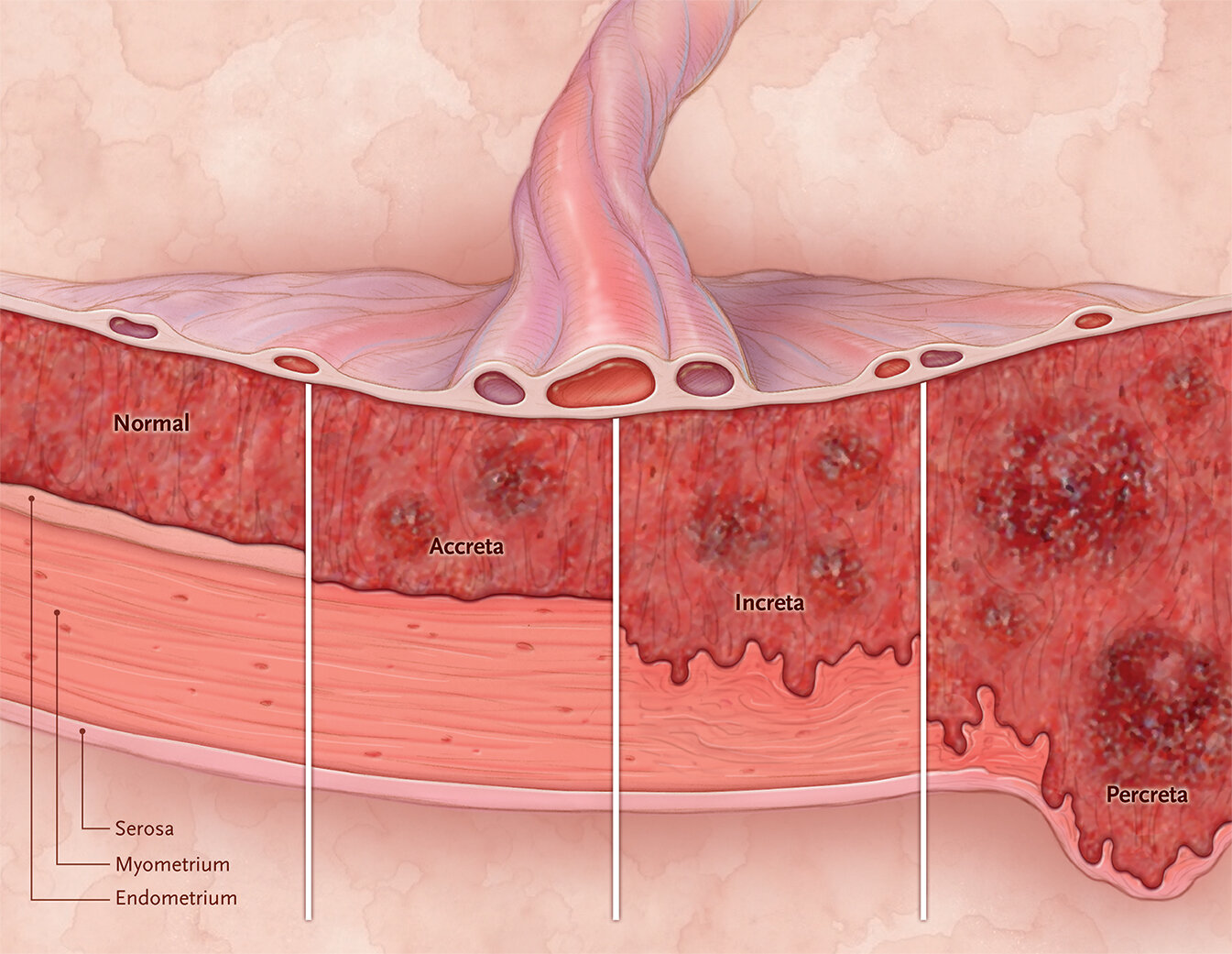Placenta Accreta Part II: Management
/After last week’s initial episode, we talk through some pearls for management. Keeping it simple today:
Antenatal care considerations:
Pelvic rest, avoid travel - don’t get into a bad situation!
Prenatal care is fairly routine.
Hospitalization practices will vary by region and level of resources — i.e., admission for proximity. Bleeding should prompt admission, likely until delivery.
Sweet spot for delivery typically between 34-35’6 weeks, though some centers pushing towards 36+ weeks.
However, as Dr. Einerson mentions, the worst thing you can do is end up in an emergent delivery scenario with these patients!
Don’t forget about using late preterm steroids!
Cesarean hysterectomy tips:
Collins 2019 paper on evidence-based management. Don’t deliver too late!
Multidisciplinary / interdisciplinary care leads to less morbidity.
Ureteral stents: if you need them to identify ureters to safely perform surgery.
Some tips from our guests:
Approach through VML skin incision, though Maylard / Cherney incisions are also reasonable. Fundal hysterotomy (typically) to avoid messing with the placenta.
Decrease blood flow before addressing the bladder - they often take the uterine vessels before developing the bladder.
Arterial catheters such as the REBOA are to be used in experimental settings only, and are associated with serious complications.
If bleeding - the most experienced operators need to be there.
Bipolar vessel sealing devices (such as LigaSure) are helpful!
Conservative management?
To be done only on an experimental basis at this time! Reasonable to examine in a trial for a number of reasons.
Methotrexate does NOT work for retained placenta — MTX kills rapidly dividing cells, not stagnant cells left behind.
Patient resources / advocacy:
Check out the National Accreta Foundation as a great patient advocacy resource.



